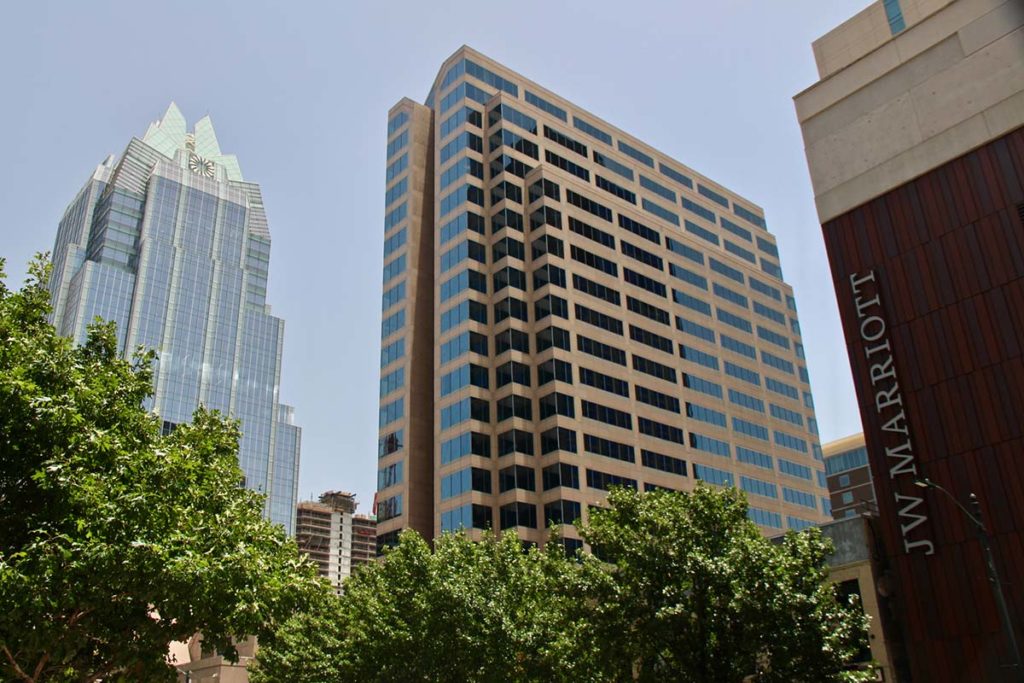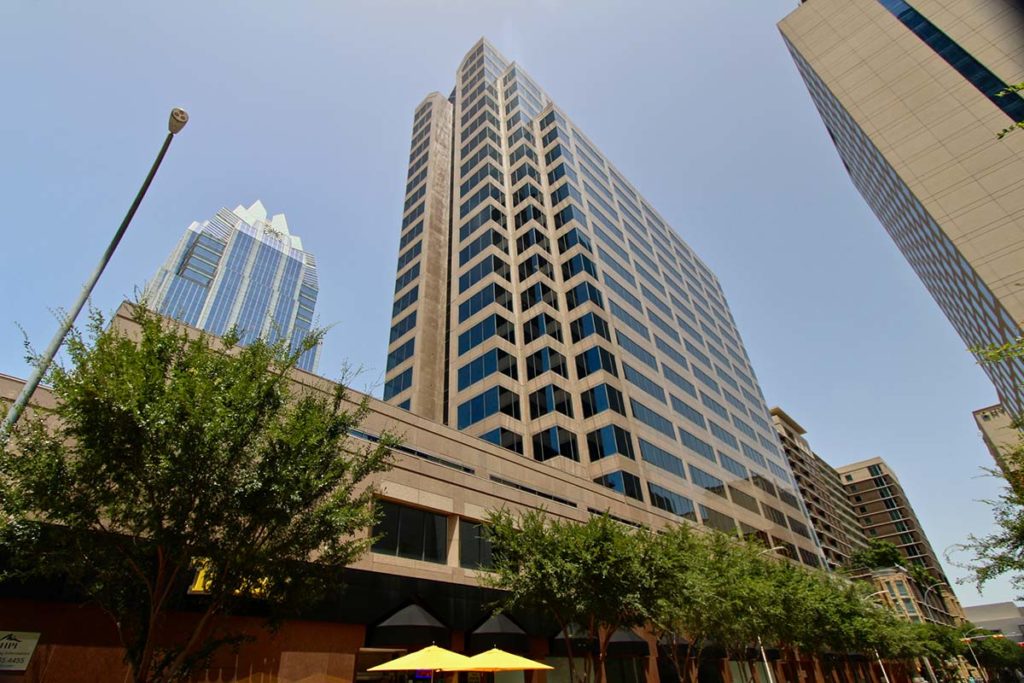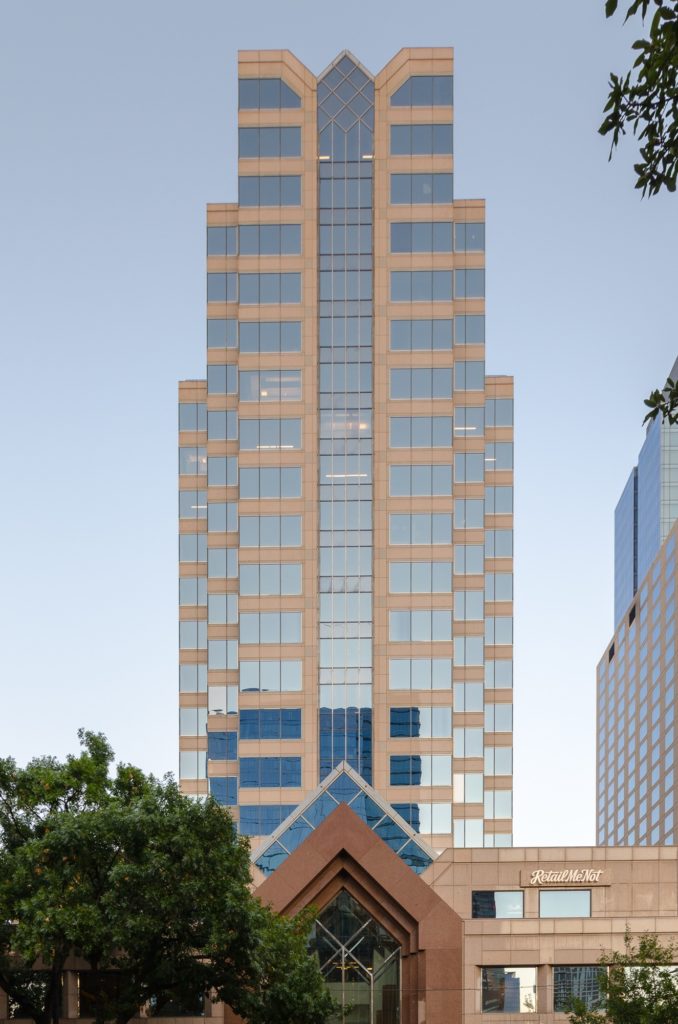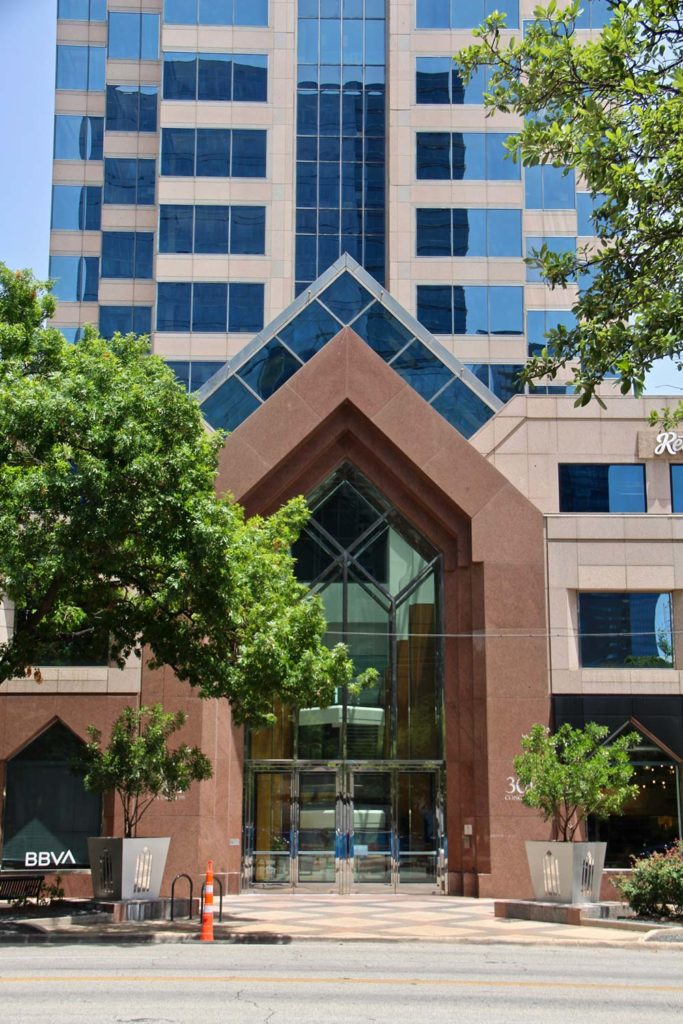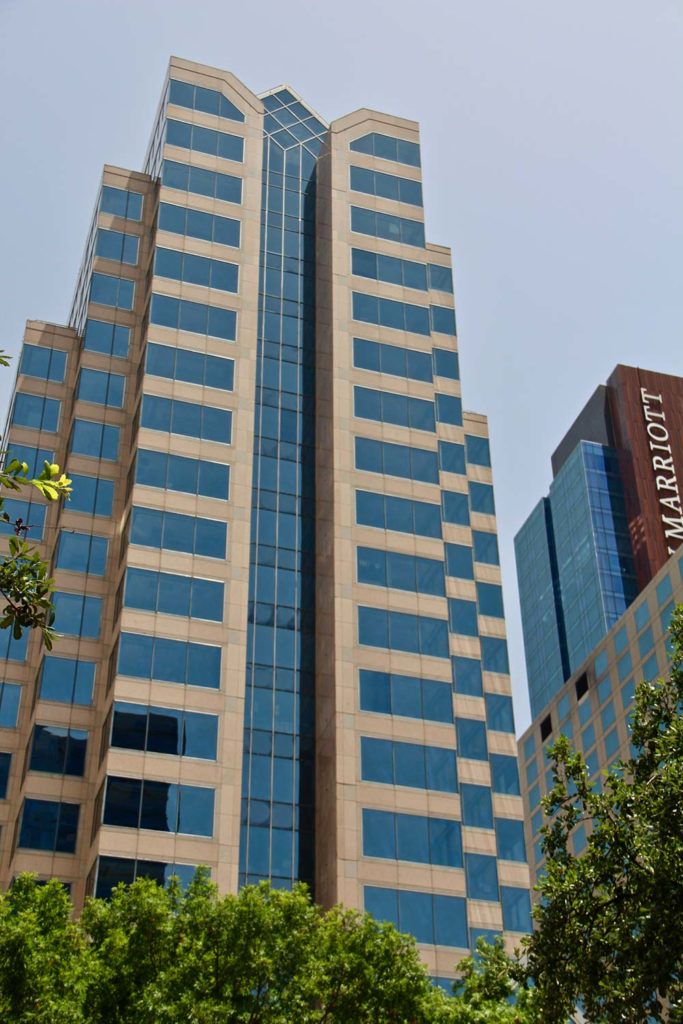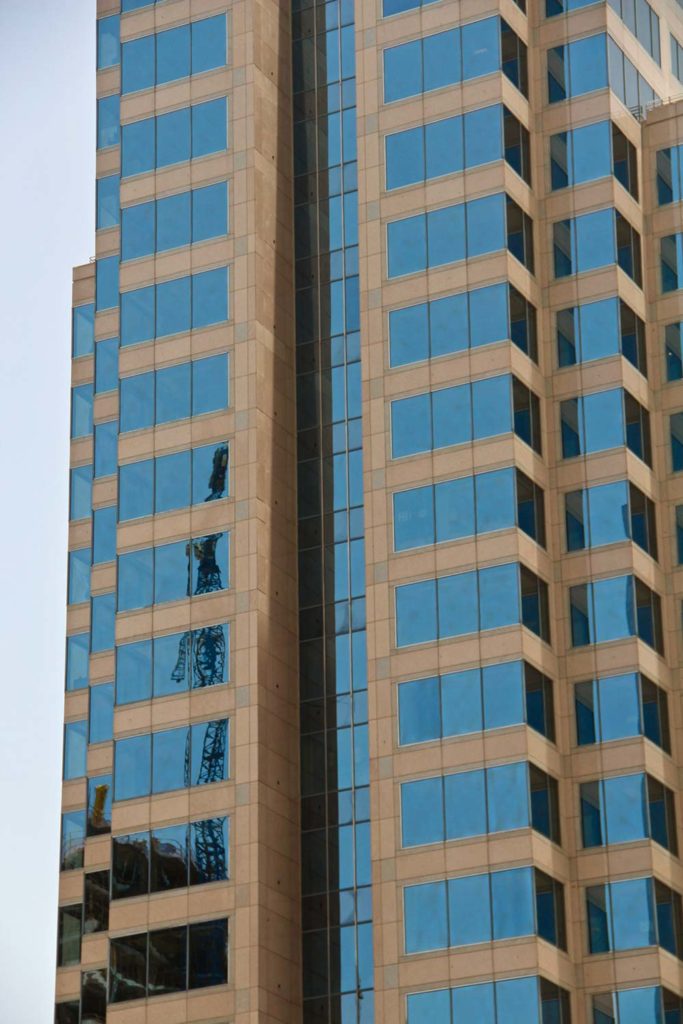- Built:
- 1986
- Architect:
- Hylton Dey Associates & HKS, Inc.
- Style:
- Postmodern
Description
Formerly known as the Temple-Inland Building, 301 Congress is a 306-foot-tall postmodern skyscraper that contains nearly half a million square feet of office space. A two-story base clad in red and pink granite arranged around a 68-foot-tall atrium fronts Congress Avenue, with a 22-story granite-and-glass tower set back from the street.
Placemaking
301 Congress is a testament to how expectations have evolved for the role of individual buildings in urban centers. In the 1980s, downtown Austin experienced a building boom that defined the skyline for the next two decades. The architecture of 301 Congress—along with its contemporaries at #100, #111, and #600—rebelled against the perceived rigidity of modernism with buildings that incorporated geometric forms, angled planes, and contrasting materials. But today these tall buildings fall short when it comes to contributing to an active and dynamic pedestrian experience.
In the 1980s, downtown was blighted by years of neglect, and there was little expectation that people would stick around after work. As a result, the architecture of 301 Congress focuses on broad gestures—such as the glass skylight of the atrium that extends up the east side of the building and reappears at the uppermost level—while doing little to encourage interaction with pedestrians. While the height of the base and the tripartite division of the façade (three bays with windows on each story) continues the rhythm and scale of the adjacent historic structures, physical connections to the sidewalk are few and far between. Likewise, the sealed-off exterior of the detached parking garage creates a pedestrian dead zone in the northeast quadrant of the block. Compare this to the nearby JW Marriott (built in 2015), where a porous ground level blurs the line between interior and exterior.
Architecture aside, it is this site’s unique history that sets it apart from its postmodern siblings. From 1898 to 1965, this site was occupied by the Houston and Texas Central Railway Depot. A set of tracks ran east to west along 3rd Street (then named Cypress Street), passing Congress and crossing over a trestle bridge that still spans Shoal Creek. The handsome three-story red brick building featured an ornamental stone portico along Congress, a small turret, and its own moonlight tower. At the time of the station’s construction, the Houston and Texas Central Railway reported earnings of $3.5 million (nearly $100 million today) and offered popular routes to destinations like Chicago and St. Louis. But as air travel became cheaper and governments poured money into highways, ridership declined until the station shuttered in 1952. It was demolished 13 years later, and for two decades the site remained vacant.
But the history of this site extends way beyond the late 19th century. Excavations for the skyscraper’s foundation uncovered a collection of fossils dating back 15,000 years to the late Pleistocene, when archaeologists theorize that this was a prehistoric watering hole. Enter the lobby (recently renovated) and you’ll find a glass case containing a few of these fossils, including bones from mastodons, mammoths, sloths, horses, and saber-toothed tigers. Additional finds are on display at the Dino Pit at the Austin Nature and Science Center. – Bud Franck
Bud Franck, Sergio Reza
